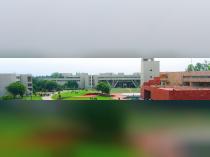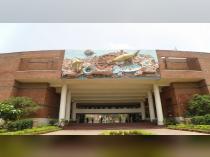Can you pursue CSE, mechanical, electrical or IT in DTU or NSIT as I scored 102 marks in JEE Mains (OBC category) in UP?
(OBC rank- 18787, General rank- 70799)
-
2 Answers
-
You are try your best, but the chances of getting this college is quite low. So, I'll prefer you to look in other colleges also. If you get any of these colleges, then it is good to have it, but if not, then you should have a backup plan, you can opt for any other NIT like NIT Kurushetra and NIT Jalandhar, these are also good NITs.
-
Your rank is far beyond to get any branch at DTU or NSIT, however check here to get more insights:
https://www.shiksha.com/b-tech/resources/jee-mains-college-predictor
Similar Questions for you
The MSU Baroda JEE Main cutoff 2025 was released for admission to the BE/BTech programme for all rounds and categories under the All India quota. For the General AI category the cutoff ranged from 900036 to 932461 for admission to the BE course. The toughest specialisation according to the first round closing ranks was B.E. in Computer Science and Engineering, and the easiest BE specialisation was B.E. in Irrigation and Water Management, with the first round closing cutoff being 900036 and 990078.5, respectively. Students can click here to know more about JEE Main cutoff 2025.
Candidates who are participating in Uttarakhand BTech counselling through JEE Main score need to provide details about their application & roll number and All India Rank (AIR) of JEE Mains exam. The allotment of seats will be based on the rank of JEE Main.
The GL Bajaj Noida JEE Main Cutoff 2025 has been released for admission to the BTech programme and its specialisations. The GL Bajaj Noida JEE Main Cutoff 2024 ranged from 123916.5 to 485227 for the students belonging to the General category under the All India quota. The toughest specialisation according to the JEE Main cutoff 2024 was B.Tech. in Computer Science and Engineering, and the easiest was B.Tech. in Mechanical Engineering.
To know the cutoff for other categories and quotas, click here.
Yes, the JEE Main admit card is needed at the time of JoSAA counselling.
After you doenload the JEE Mains admit card, you have to:
- Paste a photo (same as the one uploaded in the online form before reaching the exam centre).
- Do signature (on the exam day, in presence of invigilator)
- Put left hand thumb impression (before reaching the exam centre)
Taking an Exam? Selecting a College?
Get authentic answers from experts, students and alumni that you won't find anywhere else
Sign Up on ShikshaOn Shiksha, get access to
- 66k Colleges
- 1.2k Exams
- 680k Reviews
- 1800k Answers




